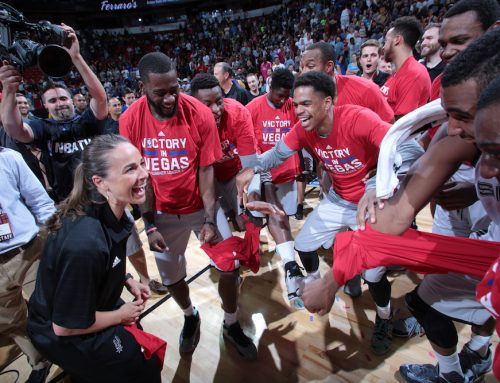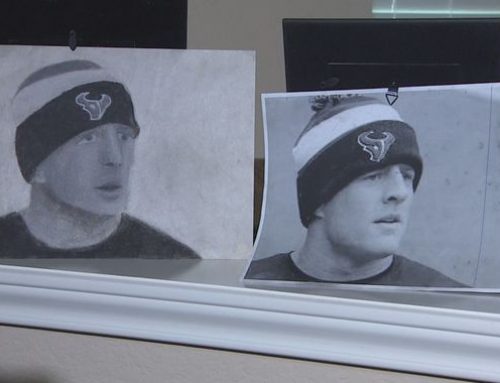Via NBA.com
You doubt Kobe Bryant at your peril. But this would be some piece of work, even for the first-ballot future Hall of Famer.
How are the Los Angeles Lakers supposed to build a team around him that’s good enough to contend for a title — the only thing that matters to the 35-year-old — when the Buss family gave him a $48.5 million extension last week that will make him a Laker for life? It creates a double burden on Bryant, recovering from the torn Achilles’ that ended his season last spring. Be great. Be better than great. While you continue to rehab.
Again, Bryant loves proving people wrong. He’s using those ridiculous player ratings from ESPN.com as a slap at his standing as one of the elites. He never forgets, or forgives, and like Michael Jordan (to the end!), he’s not above creating slights where none exist to provide fuel for his work ethic. He could, perhaps, be back on the court as early as this Friday, after the Lakers get three days of practice. At the latest, he’ll surely be back before Christmas.
“This is the challenge that was just directly in front of me,” he said last week at a news conference in Washington. “I can respond to that 10 times out of 10. This has to get done. Come hell or high water, I’m going to figure this out.”
Without going into sleep-inducing specifics, here are the basics:
At $23.5 million next season and $25 million in 2015-16, Bryant eats up a lot of the Lakers’ salary-cap space the next two seasons. The cap for those seasons, of course, has not been determined yet, but assuming a modest uptick from this year’s $58.6 million cap, Bryant’s deal takes up just under 40 percent of the room.
How the Lakers fill in the rest of that room is obviously up to them. They currently have only two other players under contract — Steve Nash, entering the final season of his contract at $9.7 million, and backup center Robert Sacre (a little more than $915,000). Reserve guard Nick Young has a player option for $1.27 million; the assumption is the L.A. native will exercise it and be on the roster next season.
The Lakers could use the stretch provision of the new collective bargaining agreement to waive Nash before the start of next season, and spread the $9.7 million they owe him over three seasons for cap purposes (hence the term “stretch” provision). That would cut Nash’s cap expense for 2014-15 and each of the following two seasons to around $3.23 million. If the Lakers do that, and Young is aboard, and they don’t trade Sacre, they’d have, including Bryant’s salary, about $28.9 million committed — technically. (That doesn’t include the amount the Lakers would pay in first-year salary to their first-round Draft pick, but we won’t know what amount that will be until we know where the Lakers are picking.)
But to maximize their cap room, the Lakers would have to renounce their rights to those players — give up their Bird Rights to them — and let them walk. That would include several free agents the team wants to keep, from guard Steve Blake to center/forward Jordan Hill.
And there is Pau Gasol, who makes $19.2 million this season. He’s likely due for a cut next season, no matter where he plays — even though he’s still a productive player. The question is how much, and for whom. Gasol has the backing of superagent Arn Tellem, who enjoys proving people wrong that think his clients won’t get what he wants.
Knowing Tellem, there’s no way Gasol will sign for $10 million to $12 million to stay in L.A., when he’ll have any number of teams as potential suitors: Dallas, Golden State, Washington and perhaps Chicago, depending on what direction the Bulls take.
“If Pau stays, I think they could still have room for another guy,” a prominent agent said over the weekend. “Maybe they wait a year for the
Bryant bristled last week at any notion that his new deal cost the Lakers future flexibility. He did take a pay cut from the maximum he could have been paid next summer. He could have been paid about $32 million, based on his salary this season of $30 million. But he was more annoyed at what his camp believes is an owner-fueled narrative: Because of the new CBA, with its new repeater tax penalties, all players — especially the stars — will have to take a significant financial haircut in order for their teams to be able to field competitive teams. Those who care about winning, according to the narrative, will do so compliantly.
The narrative was especially noxious to his camp in the context of the Lakers, a team that’s getting $3 billion over the next 20 years from Time Warner to broadcast its games. The franchise prints money, beginning with the courtside seats and sponsorships that Bryant’s presence will keep selling. And sales of franchises, as the union tried to point out during the lockout, not only continue to rise, but continue at prices for multiples of what the previous owners brought the team. Chris Cohan bought the Golden State Warriors in 1995 for around $119 million (about $182 million in current dollars); he sold them to Joe Lacob and Peter Guber in 2010 for $450 million — and likely could have sold it for even more to Oracle co-founder Larry Ellison, who surprisingly lost his bid for the team.
The Maloof family bought a majority interest in the Kings in 1989 for $156 million ($293 million today); they sold the franchise earlier this year to a group headed by entrepreneur Vivek Ranadive for $534 million — and, again, had a suitor willing to pay even more. That was, of course, Seattle-based hedge fund manager Chris Hansen, whose group said it would bid up to $406 million for a 65 percent controlling share of the team, valuing the franchise at $625 million.
Bryant, by all accounts, has looked great since returning to practice in early November. Derrick Rose, by all accounts, looked great in practice for months, and he looked great in the exhibition season. The regular season proved to be a greater challenge, and it will for Bryant as well — even if the Achilles’ is not the impediment many think.
Because Bryant’s game is swaddled in fundamentals, playing a more ground-based game is not going to be a big deal for him. With his footwork, deft headfakes (Bryant and Dwyane Wade are still the best in the league at getting defenders off their feet) and upper body strength, he can get his shot off any time against any defense. Bryant mastered playing the “pinch post” of the triangle offense years ago, and he’s become very comfortable posting in D’Antoni’s offense as well.
“He knows how to play the game,” D’Antoni said last week. “You would normally have to [adjust] anyway, as you get older. He’s just put different elements in his game that’ll be different than what it was. Like I said, I have no doubts that he’ll be at a very high level.”
“To think he’s just going to blend in … hmmm, I think that’s a bit of a stretch,” D’Antoni said.
Left unsaid, though, is the only question that matters: Even if the Lakers have room, will contemporary free agents want to come there? Was Dwight Howard’s departure to Houston an outlier, or a portent of things to [not] come?
It’s hard to see a scenario where anyone who’s used to having an offense run through him (James) or who gets a ton of shots (Anthony) would want to leave that for what would, at best, be a timeshare with Bryant (or Bryant and Gasol). True, the Olympic experience of 2008 and ’12, where Bryant teamed with James and Anthony (both times) and Love (in ’12) to win gold medals, brought those star players a little closer together. You never say never. But it’s hard to see.
Whatever happens, Bryant will never — ever — lose his competitive zeal. If you’re around him for five minutes, you know how much he still burns to compete and win. It is his greatest attribute. It is his greatest flaw. It is why he has five rings, and thinks, if you’ll just get out of his way, he can get one more.
The Lakers gave Bryant almost $50 million at age 35. When you think about it, they didn’t have much of a choice. The late patriarch, Jerry Buss, made his choice in 2004, when he traded Shaquille O’Neal to Miami and made Bryant the face of the franchise. Through everything that’s transpired since — everything — the franchise’s belief in Bryant has never wavered. They will go down with Bryant, because that’s all they’ve known in Los Angeles since 1997, and they’re not going to stop now.



